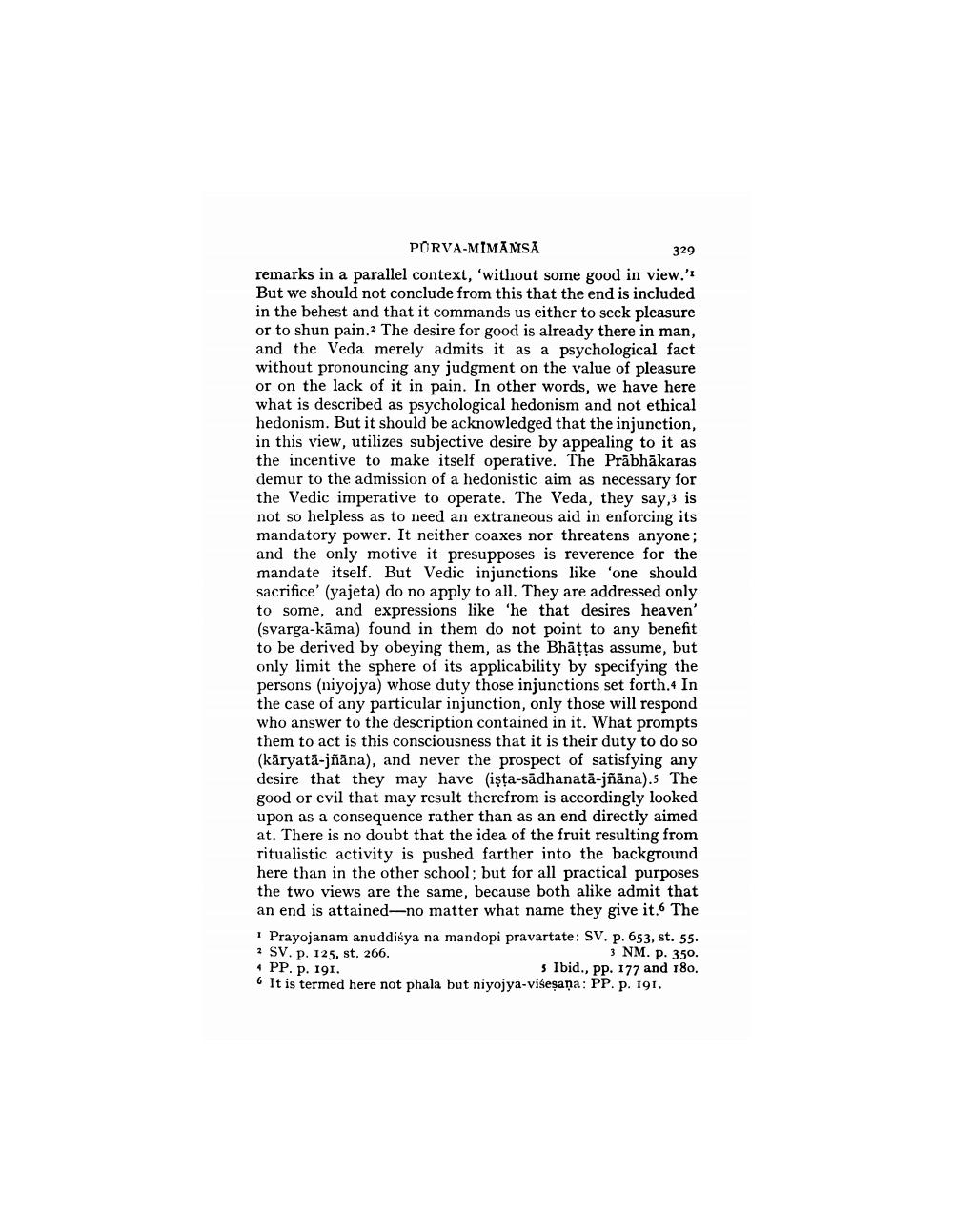________________
PORVA-MIMĀMSA
329 remarks in a parallel context, 'without some good in view.' But we should not conclude from this that the end is included in the behest and that it commands us either to seek pleasure or to shun pain. The desire for good is already there in man, and the Veda merely admits it as a psychological fact without pronouncing any judgment on the value of pleasure or on the lack of it in pain. In other words, we have here what is described as psychological hedonism and not ethical hedonism. But it should be acknowledged that the injunction, in this view, utilizes subjective desire by appealing to it as the incentive to make itself operative. The Präbhākaras demur to the admission of a hedonistic aim as necessary for the Vedic imperative to operate. The Veda, they say,3 is not so helpless as to need an extraneous aid in enforcing its mandatory power. It neither coaxes nor threatens anyone; and the only motive it presupposes is reverence for the mandate itself. But Vedic injunctions like 'one should sacrifice' (yajeta) do no apply to all. They are addressed only to some, and expressions like 'he that desires heaven' (svarga-kāma) found in them do not point to any benefit to be derived by obeying them, as the Bhāțțas assume, but only limit the sphere of its applicability by specifying the persons (niyojya) whose duty those injunctions set forth. In the case of any particular injunction, only those will respond who answer to the description contained in it. What prompts them to act is this consciousness that it is their duty to do so (kāryatā-jñāna), and never the prospect of satisfying any desire that they may have (işta-sādhanatā-jñāna). The good or evil that may result therefrom is accordingly looked upon as a consequence rather than as an end directly aimed at. There is no doubt that the idea of the fruit resulting from ritualistic activity is pushed farther into the background here than in the other school, but for all practical purposes the two views are the same, because both alike admit that an end is attained-no matter what name they give it. The · Prayojanam anuddisya na mandopi pravartate: SV. p. 653, st. 55. 2 SV. p. 125, st. 266.
3 NM. p. 350. 4 PP. P. 191.
Ibid., pp. 177 and 180. 6 It is termed here not phala but niyojya-visesana: PP. P. 191.




